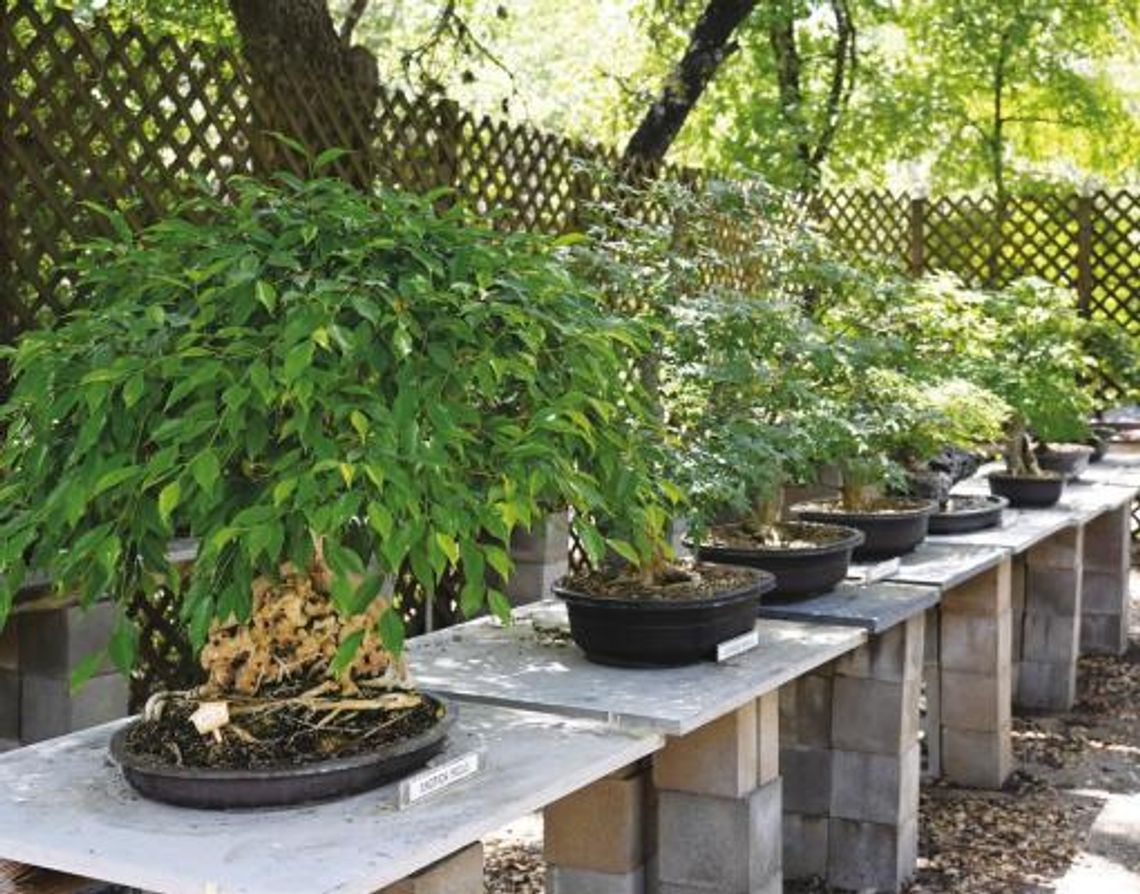Bonsai cultivation, the horticultural practice of miniaturizing trees as a representation of nature, is more than a thousand years old.
It originated in China and was known there as “pun-sai” (or “penzai” or “penjing”) which simply put, meant plant (pun) in a container (sai). Historians think that early travelers, struck by the sight of miniature trees with gnarled trunks growing in the harsh climate of mountain ranges, may have carried the aesthetic back with them. As early as the fourth century BCE, Chinese Taoists believed that recreating nature in miniature allowed people access to their spiritual properties within the natural world.
By the twelfth century, the practice found its way to Japan and was adopted by Zen Buddhist monks who developed it as a spiritual practice to instill peace and tranquility. In the Japanese language “pun-sai’ became “bon-sai,” but the meaning remained the same: plant (bon) in a container (sai).
Within minutes of meeting bonsai practitioner Chuck Ware of Wimberley, a soft-spoken man in his eighties, lessons in the practice of bonsai began. Delivered with the deliberate focus of a teacher, the lessons came with parallel lessons in the process of living.
A seasoned school teacher, Ware and his wife opened Jade Gardens in the late 1960s. Its enduring presence near the junction of RR12 and FM3237 has been a fitting testament to their abiding commitment and to the long game of nature itself.
Known likewise as the Central Texas Bonsai Exhibit and marked by a large wooden sign, the exhibit, like Ware, is a repository of wisdom and knowledge. The gardens, once 200-strong, is now home to some 40 sculpted central Texas varieties of plants and trees that even the most casual viewer will recognize as living works of art.
Ware taught for nearly 30 years at Bowen Elementary School, where the HEB grocery store now stands. In those days, he was responsible for 87 children from the first grade to the ninth who hailed from ranching families and were instinctively in tune with the outdoor world. He took them on walks to learn about the trees in their world, teaching them to identify the shape of their leaves, the nature of their bark and to recognize their age from the attitude of their limbs.
“Like a human,” Ware said, “a tree changes slowly. Over time and with observation, you will recognize its strengths. Your job as a teacher, a parent and a bonsai practitioner is to bring out the best in that living thing.” It takes patience.
One of the bonsai trees in his collection is a 30-year old live oak he developed from a seven foot tree he dug from the ground. He cut the single trunk down to a stump and placed it in a bucket for 10 to 12 years. During that time the trunk grew about a foot, and he cut it off again and let it grow for another five years. Two years later, he cut the trunk again and then again in another two. Each pruning thickened a segment of the trunk that would provide a stable base for the arms and canopy that was to come. While the canopy and the position of the limbs provides the tree’s balance, the trunk is cultivated for its energy, movement and tension within the overall composition. Gnarled, ancient looking trunks are prized. The base of the trunk should be in proportion to the tree’s canopy.
After the first decade, Ware began preparing the stump for the shallow container it would eventually occupy. He cut off its largest roots, leaving it to develop fine capillaries to carry nutrition and water to the diminutive tree.
“Generally speaking,” he continued, “it takes about ten years to prepare the tree for the container. You will cut it back three or four times during that period.”
Finally, the sprouts from the trunk are carefully pruned over time to develop the canopy. The traditional whorl arrangement allows air and sun to penetrate the branches.
“The first and second branches come to you like arms,” Ware explained, “and the top leans forward slightly, toward the viewer, like a speaker to an audience.” In the traditional triangular shape of the bonsai, the apex of the tree is balanced over its trunk.
The act of pruning requires focus and concentration to develop the tree from all sides, engendering mindfulness, contemplation and reverence. The attempt to capture the force of nature into the body of a tiny tree, without sacrificing its beauty, is no simple task.
In an age where instant gratification, extroversion and superficiality reigns, the appeal of bonsai is lost on all but a few students and practitioners of the art form. Today, the Jade Gardens exhibit is winding down and open by appointment only. Appointments can be made by phone at (512) 847-2514 with the expectation they will be kept.
As the visit to Jade Gardens ended, Ware said, “The value of bonsai and everything worthwhile, is in the process itself.” In following that process, virtues are developed that lead to the creation of something beautiful. Be it a bonsai or a life, it is a lesson that the Wares seemed to have learned by heart.







